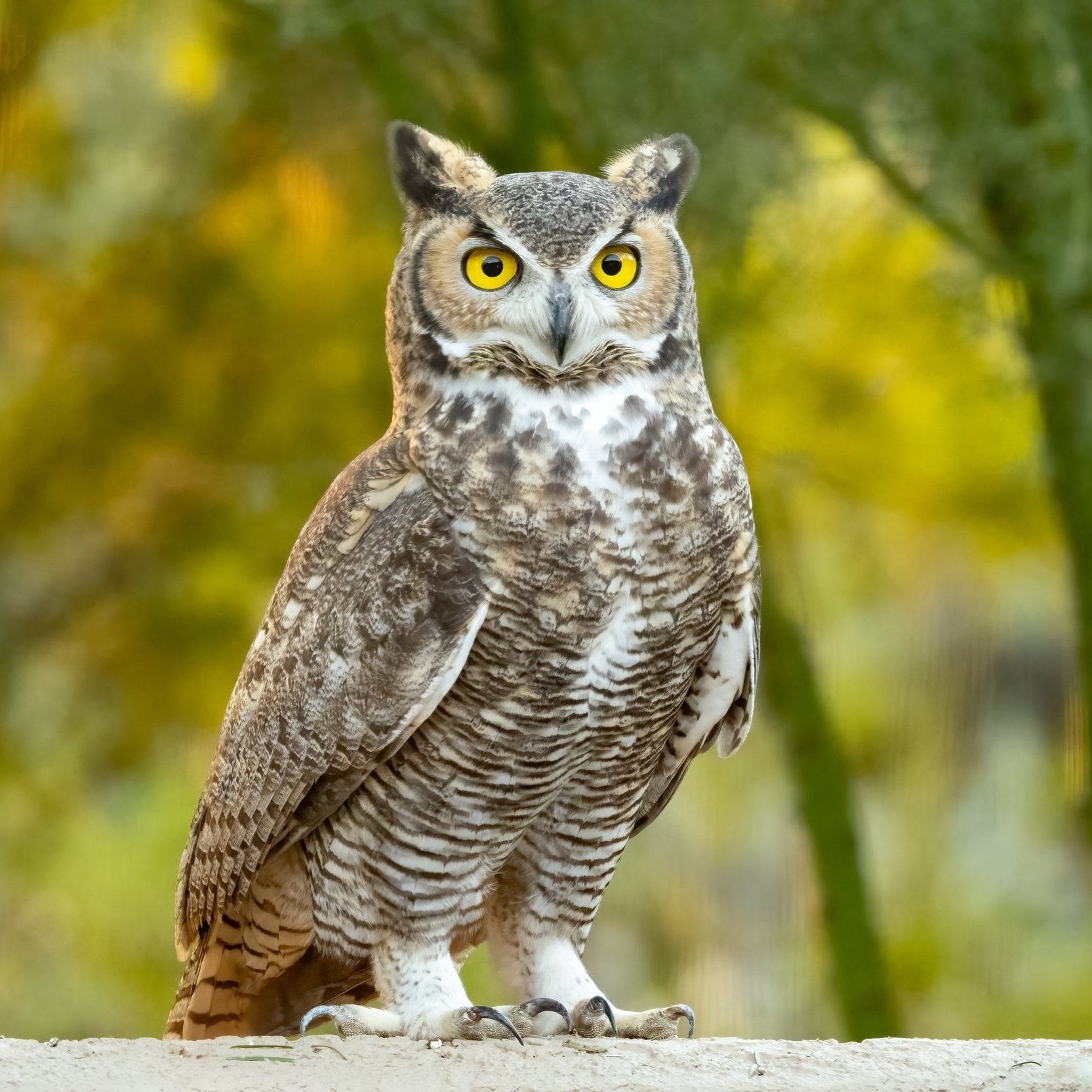The Birding Year in the Pacific Northwest
February: Stirrings in the Flock
Written by Andy McCormick
Andy McCormick, Volunteer and Former Board President of Eastside Audubon
In January 2018, the boat carrying our birding tour group moved slowly among the mangroves on the Rio San Crisobal which flows near San Blas, a town on the west coast of Mexico’s State of Nayarit. The water is calm here and the mangroves provide good cover for birds and a host of insects for them to feed on. I spotted a male Black-throated Gray Warbler and was surprised to see that it looked exactly as it appears near Seattle in summer. The bird is a striking black and white, five-inch, one-quarter of an ounce, insect-hunting specialist. Bright white stripes above the eye and below the cheek outline the black cap, black patch over the ears, and the black throat. A dot of yellow marks the spot known as the lores between the eye and the gray bill, and two white bars mark the wings. Like many wood warblers, the Black-throated Gray has one year-round plumage which it refreshes during a fall feather molt.
I saw the bird from the front of the boat as it was foraging in low scrub brush, a habitat very different from its Pacific Northwest breeding territory high on a branch in a conifer. It was foraging on its own, which can be common for birds in the tropics. Insects are abundant, and birds are protective of their territory and will defend it from other birds. By February, the Black-throated Gray Warbler will be stirring in this productive habitat gleaning as many insects and caterpillars as it can, building yellow fat nodules under the skin of its breast and belly.
The stored fat will provide fuel to carry the warbler over 1,500 kilometers (900 miles) across the Sonoran and Chihuahuan Deserts on its way north until it can find forested areas such as a Sky Island like Mt. Lemmon in Arizona or an oasis like Dugout Wells in Big Bend National Park in west Texas. These stopover locations allow the warbler to regroup and regenerate for a few days until it continues its journey over several weeks in shorter flights through woodlands and coastal scrubland. If it has built up enough reserves and survives the rigors of long flights, it will arrive in the Cascade Range in the latter part of April and begin nesting by early May. Some of these warblers will continue north to southwest British Columbia which is the northern limit of the species’ breeding range.
While the Black-throated and other warblers are preparing for their spring migration, resident Pacific Northwest birds are often foraging in mixed flocks in a pattern of cooperative feeding. This behavior helps all the birds in the flock locate suitable prey and provides protection from predators. Larger birds and especially birds of prey will be nesting while tropical birds are preparing for migration.
GREAT HORNED OWL
Great Horned Owl by Mick Thompson
The Great Horned Owl is a fierce hunter. Arthur Cleveland Bent, the compiler of twenty-three volumes of information about the life histories of North American birds, quotes a man named Ernest T. Seton in 1890 who ranked Great Horned Owls as “winged tigers among the most pronounced and savage of the birds of prey.” Great Horned Owls are carnivorous and will eat almost anything that moves. They nest and thrive in Washington in coastal forests, along the Cascade Range, and in shrub-steppe habitat.
In contrast to warblers which hatch, nurture, and fledge young birds in a matter of a few weeks, Great Horned Owls provide months of care to their young giving them time to achieve flight ability and enough independence to survive on their own. This may be one reason Great Horned Owl pairs remain together through the year. They can accommodate the time needed for the development of their young and begin breeding during the Pacific Northwest winter.
Barred Owl is another large owl, and it has expanded its range into the forests and suburbs of Washington and Oregon. One male has roosted in the trees behind our home near Seattle, and like the Great Horned Owl, began male advertising hooting on one October morning and again in the evening a few days later. The Barred Owl is particularly aggressive in defending its nest and annually signs warning walkers about swooping owls appear in local parks. I have experienced a Barred Owl’s dive-bomb tactics while I was on an early December pre-dawn run. These events are both exciting and frightening. The excitement of a close-up view of the owl was tempered by the fear of seeing such a large bird flying directly at me.
Great Horned Owls are not as aggressive, at least not toward humans. They do not construct their own nest but will use a variety of nesting locations including a cavity in a tree or rocky outcrop, a ledge, or more commonly, an old nest of a Red-tailed Hawk. Once eggs are deposited in the nest, incubation usually takes more than a month. Newly hatched owlets are atricial at hatching, that is, they are naked, helpless, and require full care by the adults which bring food to the nest and tear it up for the young.
After another 40 days, young owls may leave the nest by walking out onto a tree limb or ledge in a behavior called branching. They remain close to the nest and will receive food from adults during an additional 15-week immature stage. For eggs deposited in the nest in mid-February, the young will leave the nest in late March. Even though young Great Horned Owls will be able to fly in early May at five weeks after fledging, they will remain with the adults until July or August taking about six months to mature.
RED-TAILED HAWK
Red-tailed Hawk by Mick Thompson
In February or March, a Red-tailed Hawk, from which a Great Horned Owl may have commandeered a nest, will begin a search for another site. It may select another old nest, make some repairs, and occupy it. However, it is just as likely to build a new nest. But, before building can begin, courtship is required.
The mating ritual begins as the two hawks circle one another while ascending to high altitude on rising columns of warmer air. During their flight, the male initiates a Sky Dance by flying even higher and at the apex of its climb turns down in a deep dive toward the female. As it passes the female, it will turn again and fly back to high altitude. At some point in the flight, the male will extend its talons as it approaches the female, which may reciprocate in kind. When one of the hawks flips over with feet pointing up, the pair will interlock talons while dramatically spiraling toward the ground. When it is ready to mate, the female will position herself on a horizontal branch.
For a pair which nests in early March, the chicks will fledge by mid-April and remain near the nest in an immature state until early July. By then, the young will be more proficient hunters and will be ready to begin southward migration in August.
FEBRUARY BIRDING
By February 21 the December solstice will be nine weeks in the past and the amount of each day’s daylight, the photoperiod, will have lengthened by three hours. Resident birds of the Pacific Northwest which respond to the amount of light during the day will be more active and be moving toward their own breeding territory. However, in the shrub-steppe and woodlands east of the Cascades winter is still the order of the day. Snow-covered ground forces birds to seek other means of finding food. For example, Sharp-tailed Grouse will fly into the bare branches of willow and birch trees to nibble on the buds.
Winter also brings a suite of birds which move south in search of food. The so-called winter finches, Red Crossbills, Pine Siskins, and Evening Grosbeaks will forage on pine and fir cones. The diurnal Northern Pygmy-Owls will be perched for hunting in the morning. Rough-legged Hawks will share the air space with Red-tailed Hawks. Other wintering birds may show up in southern Canada and the northern United States. Snow Bunting, Lapland Longspur, Bohemian Waxwings, and Horned Lark numbers will vary from year to year, and Canada Jay, Gray-crowned Rosy Finch, and Pine Grosbeak may also be in the area in winter.
SUGGESTIONS FOR FURTHER READING
Weidensaul, Scott (2021). A World on the Wing: The Global Odyssey of Migratory Birds. New York: W. W. Norton and Co.
Read about Great Horned Owls and Red-tailed Hawks at the Cornell Lab of Ornithology Birds of the World at https://birdsoftheworld.org/bow/home
Read all The Birding Year articles
Header Photo: Black-throated Gray Warbler by Julio Mulero | Flickr


















